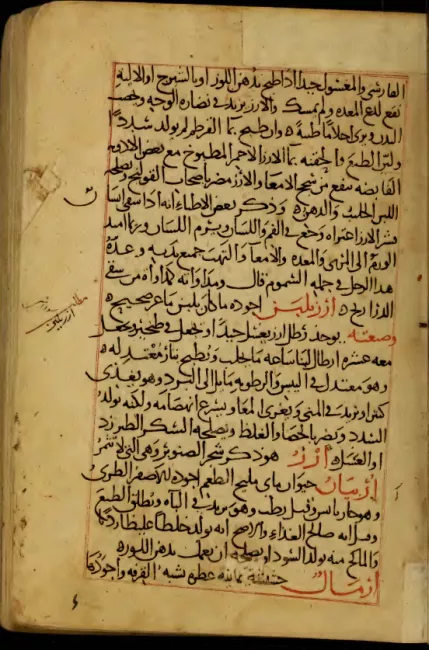
Rice Pudding: A timeless story of sweet comfort in times of war
“I swear, when the war in Gaza ends, I’ll hand out rice pudding to everyone in our street,” said an Egyptian friend of mine in a WhatsApp group chat. A Palestinian friend replied, “In some parts of Palestine, it’s given out on Thursday of the Dead.” We all laughed and agreed that we’d distribute whatever Palestinians love most when the hardship was lifted.
That casual conversation reminded me of the profound sense of safety I feel when I see rice pudding being shared with guests or neighbors. This delicious, white dessert, made with only the simplest of ingredients and steps, works magic on the spirit. It’s the sweet of our childhood, the stuff of memory, of scraping the bottom of the pot for the last delicious bites, of impatiently waiting for it to cool in the fridge.
I adored it as a child, especially topped with grated coconut. I was fascinated by the delicate skin that would form on its surface, not just for its vanilla-rich taste but for its form and texture.
Once, I even snuck into the kitchen late at night, pulled a glass dish of my mother’s rice pudding from the fridge, and gently tilted it curious to see just how long that strange layer would hold firm—and at what angle it would finally collapse under the weight of the rice below.
My midnight experiment did not end well. The rice spilled onto the floor, the dish shattered, and my secret was out. But I grieved less for the broken dish than for the treasure it had held: that soft, white pearl of sweetness, now lost.
A lifelong companion
In Egypt, it’s common to distribute rice pudding/Rozz B'labann to neighbors, relatives, and even strangers on joyful occasions—celebrating a newborn, a boy’s circumcision, academic success, or the fulfillment of a vow. We seize any excuse to spread happiness by sharing this dish, like the women in Sohag who handed it out in the streets to mark the reopening of mosques for prayer after the COVID-19 lockdown in 2020.
We also serve it to honor the dead, hoping to tip the scales in their favor with good deeds. It’s often handed out at the mosques of saints, as a form of charity.
https://www.youtube.com/watch?v=ADGMWpKEByUBut I wonder why rice pudding in particular? Why is it the dish we turn to when we want to amplify joy, increase blessings, or seek divine favor?
It’s not just something to fill the stomach, like the round bread distributed at cemeteries. Rice pudding is a carefully prepared dessert, one that cools and refreshes in the summer heat. In this, we share something with the people of the Levant, who say of it, “The colder it gets, the better it tastes.”
There’s a happiness associated with it that I can’t fully explain. Maybe its whiteness reminds us of purity, we even describe children drifting into peaceful deep sleep as "now eating rice pudding with the angels".
“Rice Pudding for Two” was the title of a blog post by the writer Rehab Bassam, which captivated many of us some 20 years ago. It later became the title of her book, which I still keep on my shelf.
Origin stories
Across cultures and centuries, civilizations have vied for the honor of inventing rice pudding.
In China—where rice was cultivated around 9,000 years ago—there’s a dish called “Eight Treasure Rice” made with rice, sugar, and a variety of grains, nuts, and dried fruits. It’s said to have first been prepared in tribute to eight brave generals over 3,000 years ago.
In India, a dish made of rice, milk, and sugar is mentioned in the ancient epics of the Mahabharata and Ramayana, which were written some 300 years BCE, though the stories they recount are believed to be even older. Today, the dish is called “kheer”.
In his 2013 book “Sweet Delights from a Thousand and One Nights,” Habeeb Salloum chronicles some of the Middle East’s most beloved desserts. He documents sweet rice made without milk, and “muhallabiya”, named after Al-Muhallab Ibn Abi Sufra, an Umayyad-era governor. But when it comes to rice pudding as we know it today, he provides no definitive historical reference or origin story.
Salloum does point to the book “Kitab Al-Tabikh wa Islah Al-Aghdhiya wal-Maakulat” (The Book of Cooking and the Improvement of Food and Dishes) by Abu Muhammad Al-Muzaffar Ibn Nasr Ibn Sayyar Al-Warraq. This 10th-century cookbook, one of the most comprehensive from the Abbasid period, is believed to date to the reign of the caliph Al-Mustakfi. In it, Al-Warraq includes a recipe titled “Muhallabiya in Al-Ma’mun’s version,” made with milk and ground rice, with added ghee and sugar.
Later, in the 11th century, we find a clearer reference to rice pudding in “Minhaj Al-Bayan fi Ma Yasta’miluhu Al-Insan” (The Clear Method in What Humans Use) by Ibn Jazla, a Baghdadi physician. There, rice pudding is discussed in medical terms—its benefits and harms listed like entries in a pharmacological guide.
In “Matali’ Al-Budur fi Manazil Al-Surur” (The Rising of the Full Moons in the Stations of Joy), Ala’ Al-Din Al-Ghazuli (d. 1412) writes that many rulers in Iraq would begin their meals with rice pudding and sugar before moving on to other dishes—preferring it above all else. He noted their belief in its health benefits, including its ability to prolong life: “It produces true dreams, and if dreams are true, they are born of longer sleep, and sleep is death, while wakefulness is life.”
In Iran, a similar dessert known as “sholeh-zard” has existed for centuries. Yellow in color, it’s made without milk, but flavored with rosewater, cardamom, and saffron.
In Turkey, the earliest known recipe for a milk-based rice pudding similar to what we know today likely dates to the 15th century. Today, they call it “sütlaç”, and it’s baked until the surface turns golden brown or caramelizes.
Today and tomorrow
The Rozz B'labann made its way to Europe and became a classic dessert in Britain. Italians infuse it with alcohol and make it into cakes. In Denmark, it’s served with a sweet cherry sauce. French chefs often showcase their mothers’ or grandmothers’ recipes for it. In the US, rice pudding even has its own holiday—celebrated each August by food lovers. The dish is found even in Latin America, where it almost shares the Arabic word for rice, “arroz”.
Across the Arab world, we gather around this dish, even if we prepare it in different ways and call it by different names.
In Sudan, as in Egypt, it’s called “Rozz B'labann” (rice with milk). Years ago, it unintentionally sparked confusion when a large pot of it was placed on a baggage cart at Khartoum Airport and served to delayed travelers.
In Tunisia, it’s known as “muhallabiya”, and in the Levant, it’s called “aruzz bi haleeb” or “bahtah”. Wherever you go, people serve this beloved dish with pride, as if they’d invented it themselves.
I’d be lying if I ended this piece with a hopeful wish that the war will soon be over, and we’ll all gather to share bowls of rice pudding. I don’t see an end in sight. Like many others, I’m weighed down by dread when I think of what’s to come. I even hesitated to write about this dish while the occupation starves and kills children in a land most of us have never set foot on, though our hearts remain bound to it.
Still, I imagine myself in Palestine. There, where the sand glows golden, perfumed with the scent of the sea, orange blossoms, and wild thyme. Where the wind carries the notes of a ney flute, drifting alongside Ahmad Kaabour as he sings:
“Traveler heading to my country, please deliver my peace…”
Our tears flow. Our throats tighten with the bitterness of injustice, especially when he sings:
“We had a playground once, long ago.
We had a gathering place, ringed with pomegranate trees.
They chopped them all down—except one.
Please, give it some water. It’s a shame…”(*)
(*)Lebanese singer Ahmad Kaabour wrote and composed his poignant song “Ya Rayeh” (“O Traveler”) on his 1985 album Hubb (Love) during the war in southern Lebanon. The song later came to be associated with Palestine and its displaced people, and with all those who mourn the fate of their homelands.

